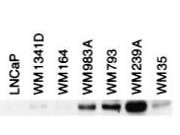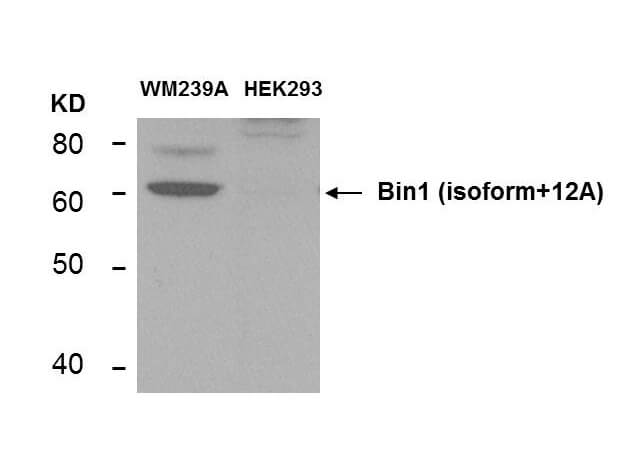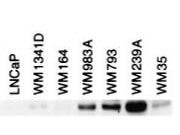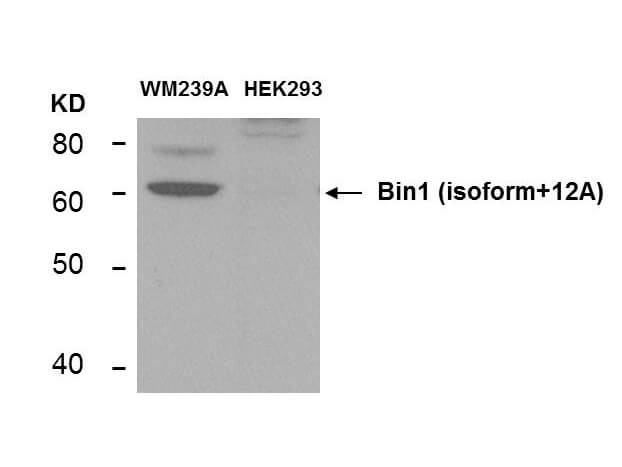
BIN1 Antibody
Product Sizes
100 ug
209-301-E62-100UG
About this Product
- SKU:
- 209-301-E62
- Additional Names:
- AMPHL, Myc box-dependent-interacting protein 1, Amphiphysin II, Amphiphysin-like protein, Box-dependent myc-interacting protein 1, Bridging integrator 1, BIN 1, BIN-1, mouse anti-BIN1 antibody, anti-BIN1 antibody|BIN1
- Application:
- ELISA, Western Blot
- Buffer:
- 0.02 M Potassium Phosphate, 0.15 M Sodium Chloride
- CE/IVD:
- RUO
- translate.label.attr.clone:
- 12A
- Clonality:
- Monoclonal
- Concentration:
- 1 mg/ml
- Extra Details:
- Bin1 is a conserved member of the BAR family of genes that have been implicated in diverse cellular processes including endocytosis, actin organization, programmed cell death, stress responses, and transcriptional control. The first mammalian BAR protein to be discovered, Amphiphysin I (AmphI), was identified in an immunoscreen for proteins associated with the plasma membranes of synaptic neurons, functions in the control of clathrin-dependent synaptic vesicle endocytosis. The mammalian Bin1 gene was first identified in a two hybrid screen for polypeptides that bind to the N-terminal Myc box 1 (MB1) portion of the c-Myc oncoprotein. Bin1 is similar to AmphI in overall structure, with an N-terminal BAR domain and a C-terminal SH3 domain. However, the Bin1 gene is more complex than the AmphI gene, encoding at least seven different splice variants that differ widely in subcellular localization, tissue distribution, and ascribed functions. Alternate splicing of the Bin1 gene results in ten transcript variants encoding different isoform. Bin1 is expressed ubiquitously in mammalian cells. Certain splice variants of Bin1 are expressed in the neurons, muscle cells or tumor cells. Bin1 may act with cancer suppressor and inhibits malignant cell transformation. A Study in human tumor cell lines found that most melanoma cells inappropriately expressed exon 12A, suggests that the aberrant splicing of Bin1 may contribute to melanoma progression.
- Formulation:
- 0.02 M Potassium Phosphate, 0.15 M Sodium Chloride, pH 7.2
- Host:
- Mouse
- Immunogen:
- Anti-BIN1 (MOUSE) Monoclonal Antibody was produced in mouse by repeated immunizations with 12A exon BIN1 protein followed by hybridoma development.
- Isotype:
- IgG1
- Physical State:
- Liquid
- Reactivities:
- Human
- Shipping Conditions:
- Dry Ice
- Specificity:
- Anti-BIN1 was purified from clarified mouse ascetic fluid by Protein A chromatography followed by extensive dialysis against the buffer stated above. This antibody is specific for human BIN1 protein. A BLAST analysis was used to suggest cross-reactivity with BIN1 from human sources based on 100% homology with the immunizing sequence. Cross-reactivity with BIN1 from other sources has not been deter
- Storage Conditions:
- -20[o]C aliquoted. Aliquot. Avoid freeze/thaw cycles.
- Supplier:
- Rockland Inc
- Type:
- Antibody: Monoclonal Antibody
- Manufacturer's Data Sheet:https://www.rockland.com/search/?searchString=209-301-E62




